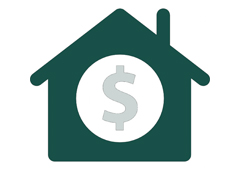When you’re shopping for a new single-family home or condo, it’s a good idea to have a laundry list of factors such as location, price, size and style to contemplate before making a purchase. Another consideration is homeowner’s associations (HOA), a board of residents that helps ensure your community looks its best and functions smoothly. Here, Realtor.com offers some insight into the best and worst qualities of HOAs to help you decide if living in this type of community is right for you.
PROS:
HOAs maintain the common areas. This is perhaps the biggest perk of living in an HOA community, because the organization will be responsible for handling all of the maintenance of common areas and repairs for the amenities outside of your home. Based on maintenance fees collected, an organized HOA maintains a comfortable balance in its fund to offset maintenance costs or unexpected issues that need to be fixed. An HOA’s level of involvement varies and might depend on the type and size of the community.
HOAs help keep uniformity. Each HOA has its own declaration of covenants, conditions and restrictions (or CC&Rs) that explain what homeowners can and cannot do—this includes streamlining the appearance of each property to make sure they retain their value. That typically means your neighbors can’t paint their house an unsightly color or add an unattractive addition to the front of their home, which ensures that the community retains the look and feel of the way it was built. Other common limitations include parking vehicles on the lawn or keeping inoperable vehicles in the driveway.
HOAs mediate problems on your behalf. An HOA can reduce conflicts and unpleasant exchanges. If your neighbors haven’t cut their lawn in several weeks or decide to turn their driveway into an auto repair shop, you don’t have to confront them because the HOA will. When anyone is engaged in activity that violates the CC&Rs, the HOA sends a friendly notice and follows up with a stern warning.
CONS:
You have to pay recurring HOA fees. If you move into an area with an HOA, membership is mandatory and so are the monthly or annual fees. The fees can change, based on decisions over which you have no control. Fees also can be a detriment to resale if potential buyers don’t want that extra cost in addition to their house payment. How much a homeowner can expect to pay varies depending on location, how expensive the house is and the amenities offered by the neighborhood. The listing agent will be able to tell you exactly how much HOA payments will be.
There’s a lot of red tape. Any exterior modification—even a minor one such as a play area for your kids—must be approved by the HOA. You are required to submit plans describing the height, colors, location, shape, and materials to the HOA board for approval, which can slow down the process or limit the type of work you can do.
HOAs can be overbearing. Although CC&Rs come in handy for preventing rowdy college students from moving in, they also might be off-putting for homeowners who like their autonomy. HOA-mandated restrictions can be set on swimming pools (for example, in-ground swimming pools can be built in the back of the house, but above-ground pools are prohibited); pets (they’re are allowed, but they can’t be bred or kept for commercial reasons; livestock or poultry are not allowed without permission); and rentals (you might be prohibited from renting out rooms or the entire home). In extreme situations, some HOAs can evict the tenant and hold the homeowner responsible for any eviction costs or any damage caused by the tenant.



